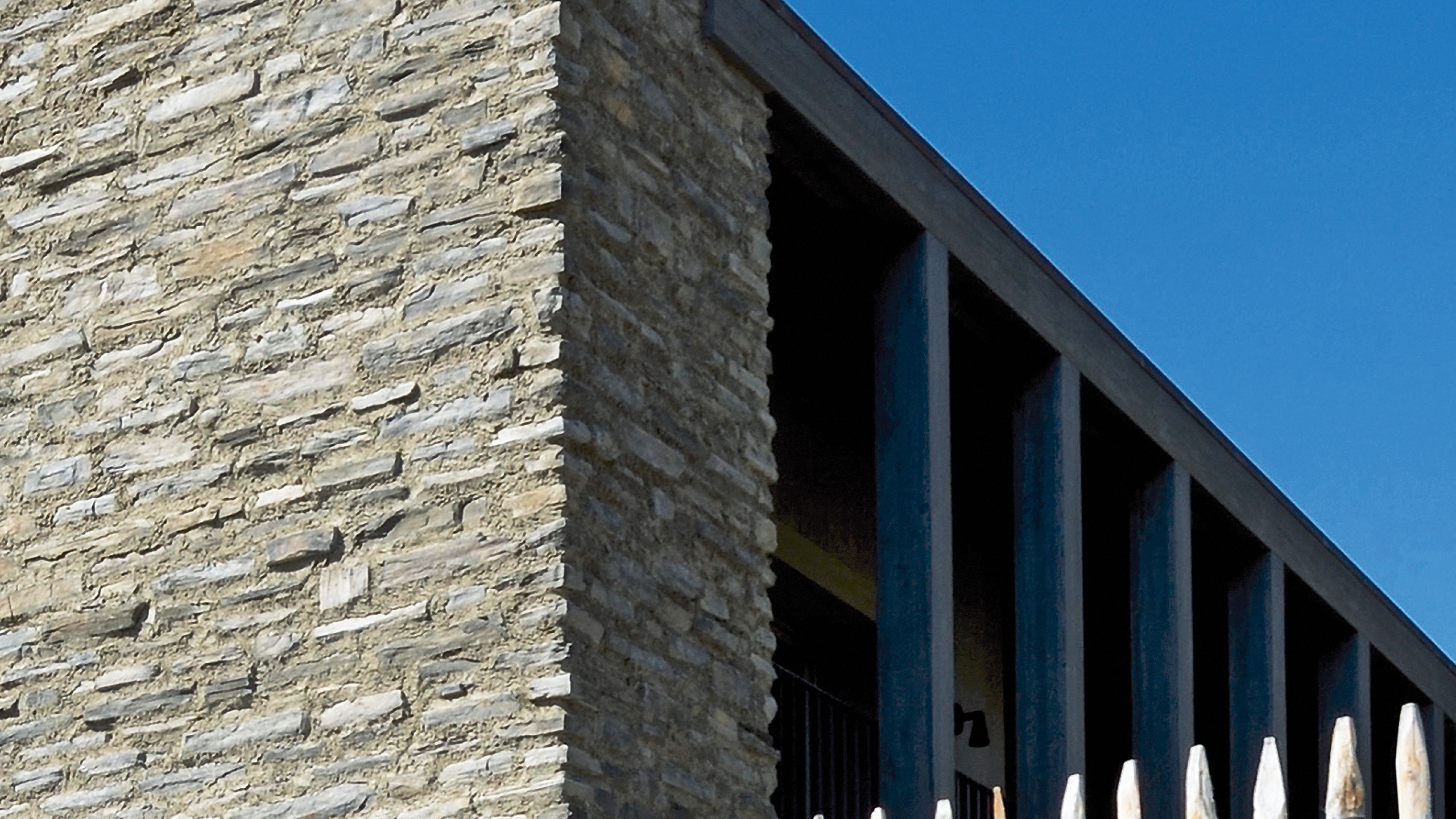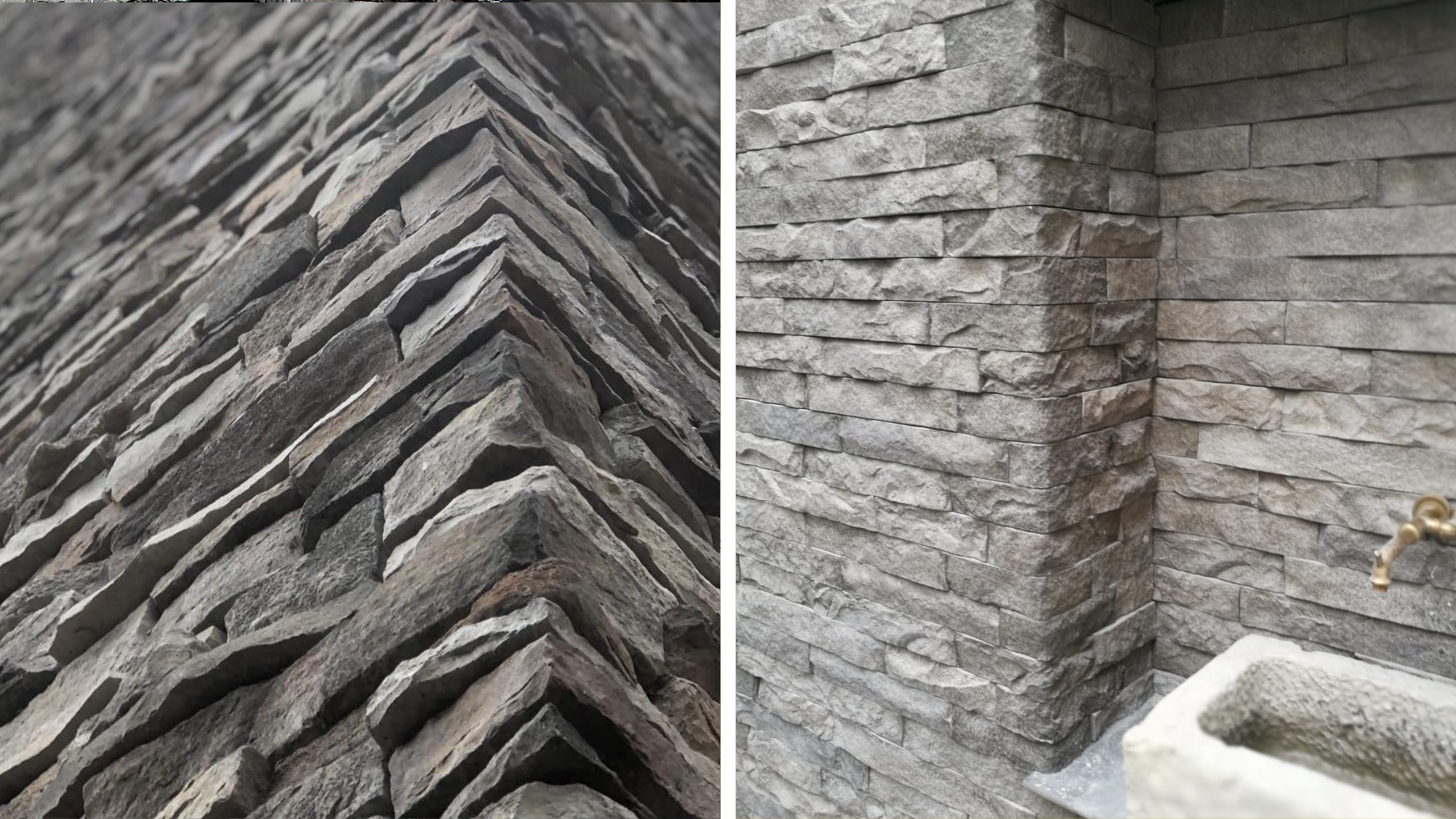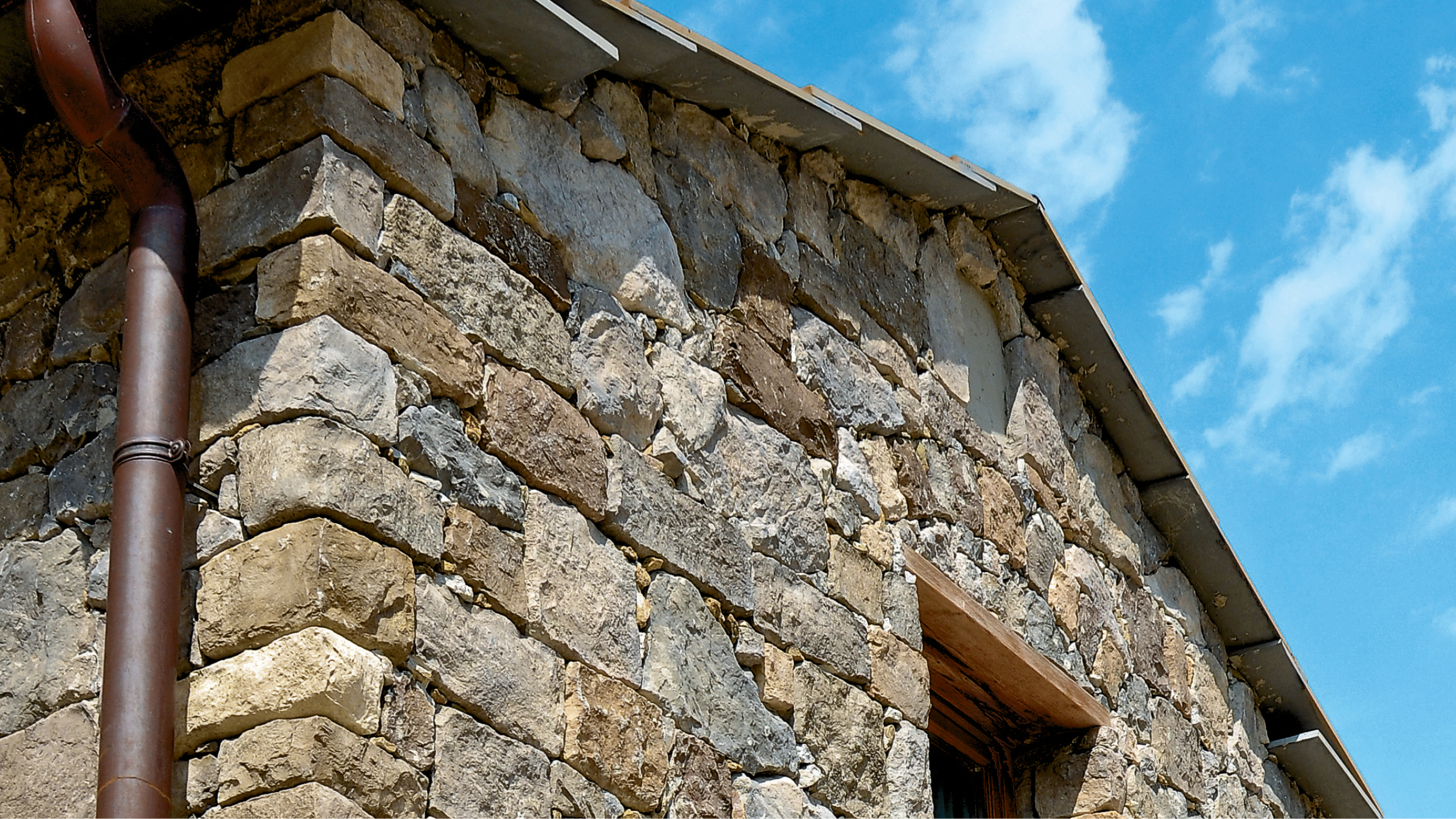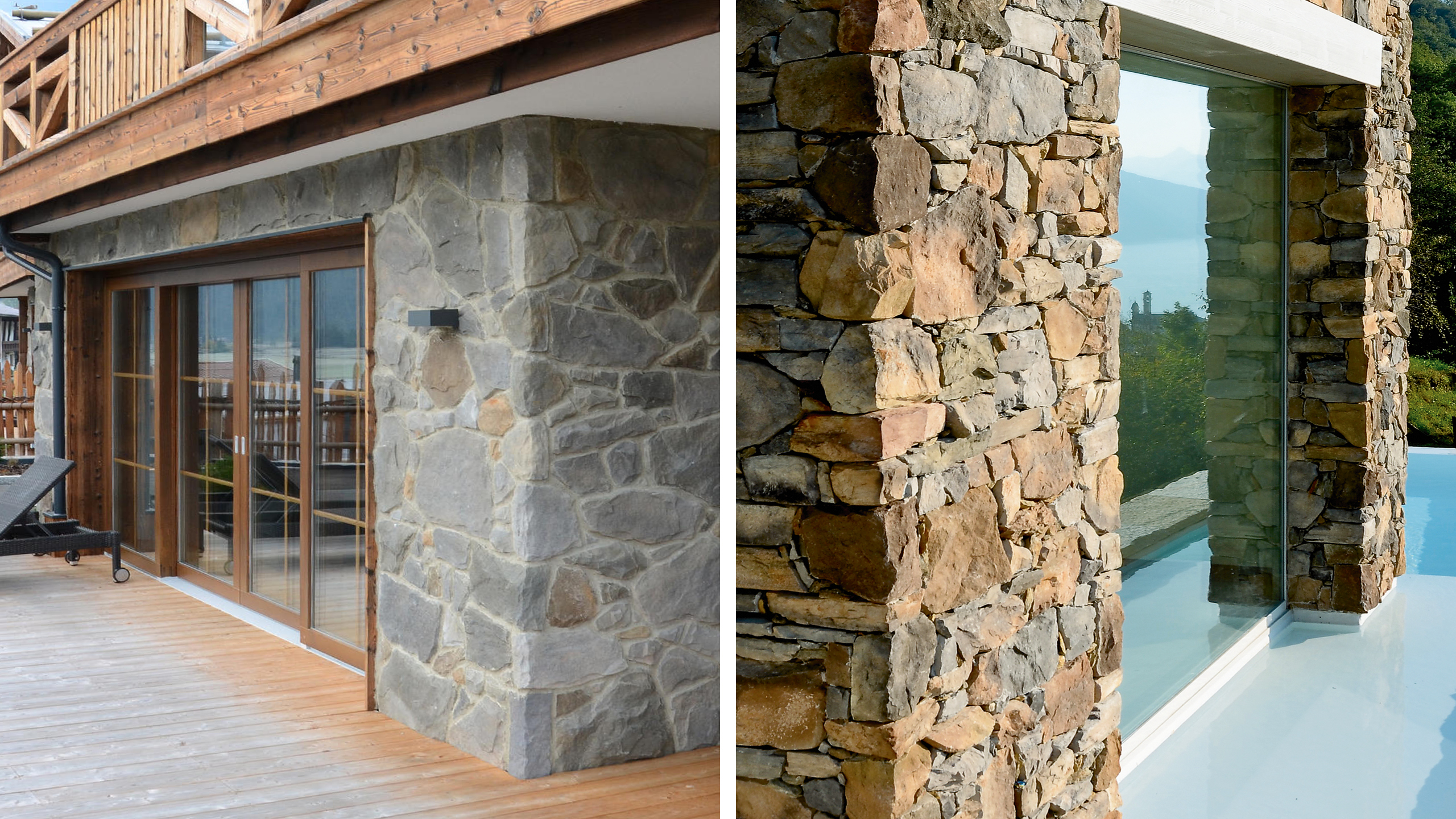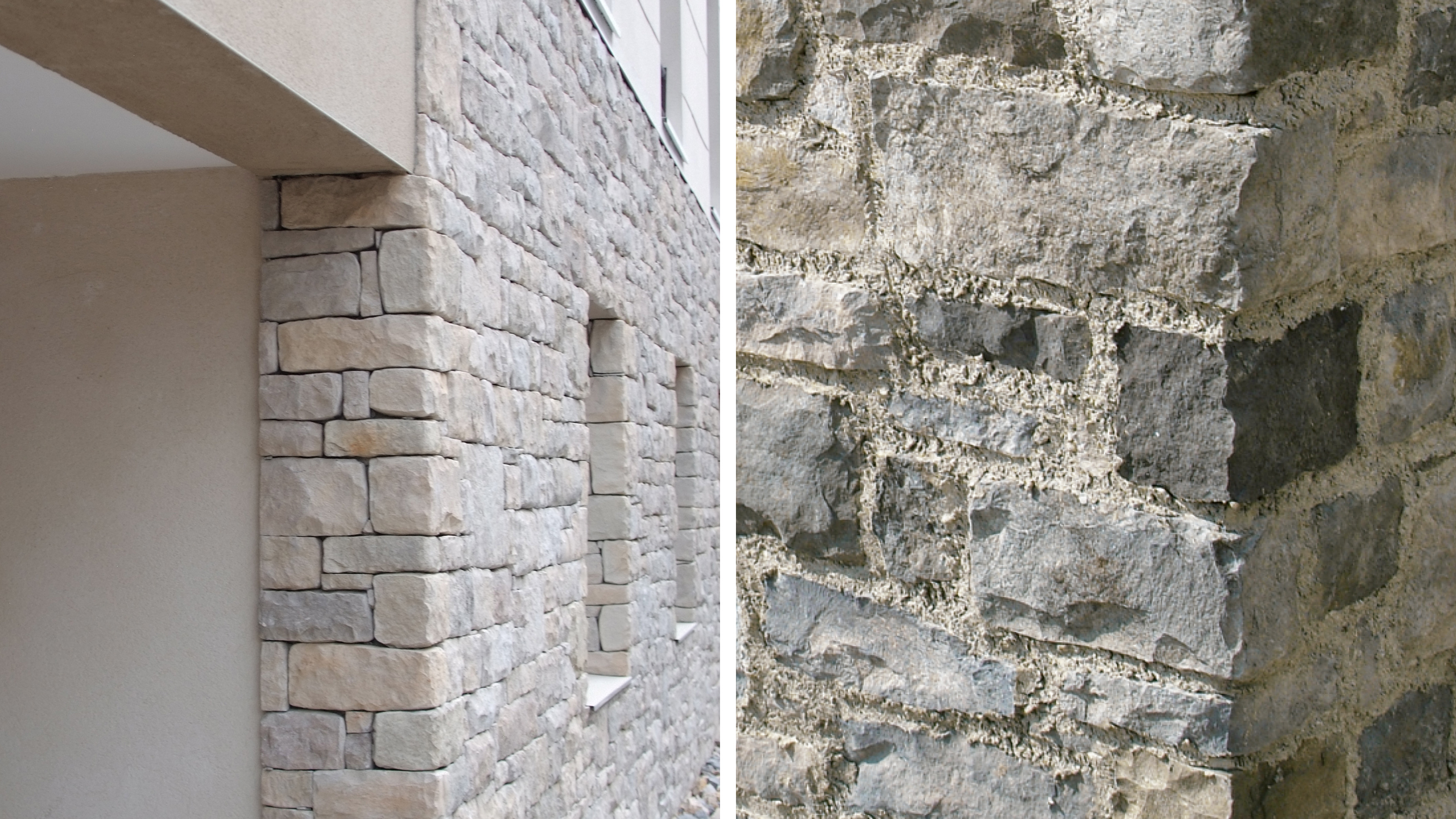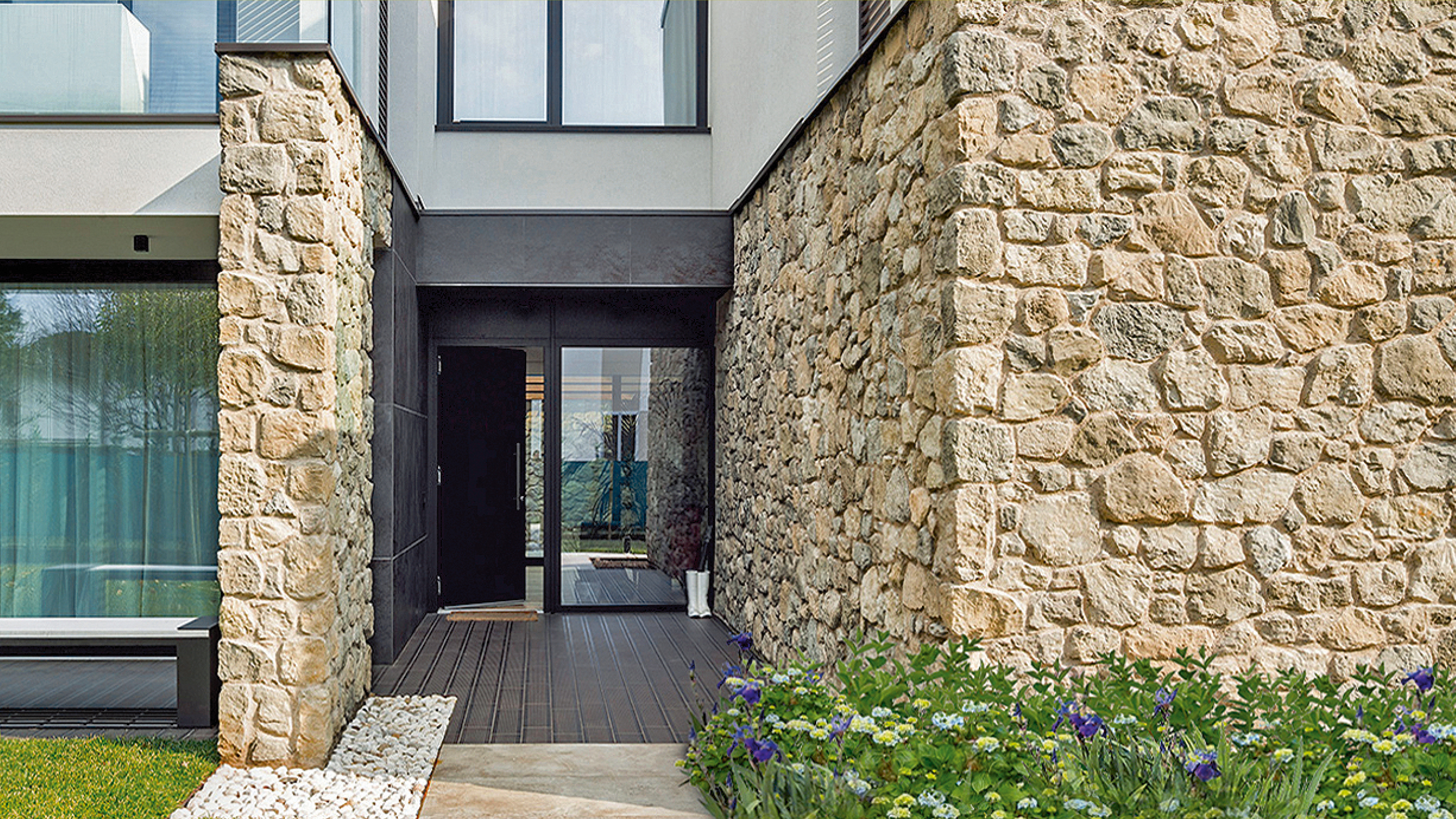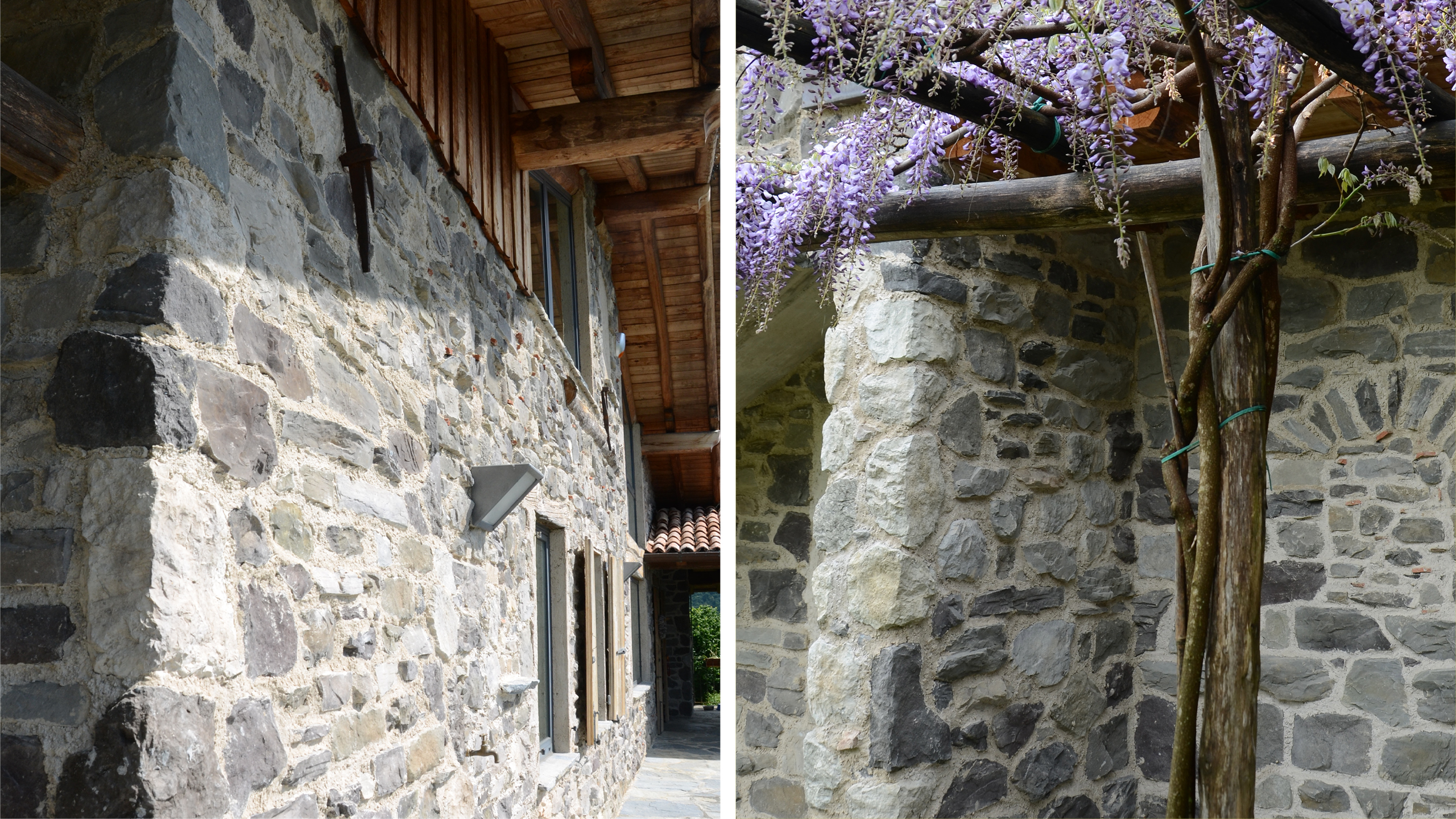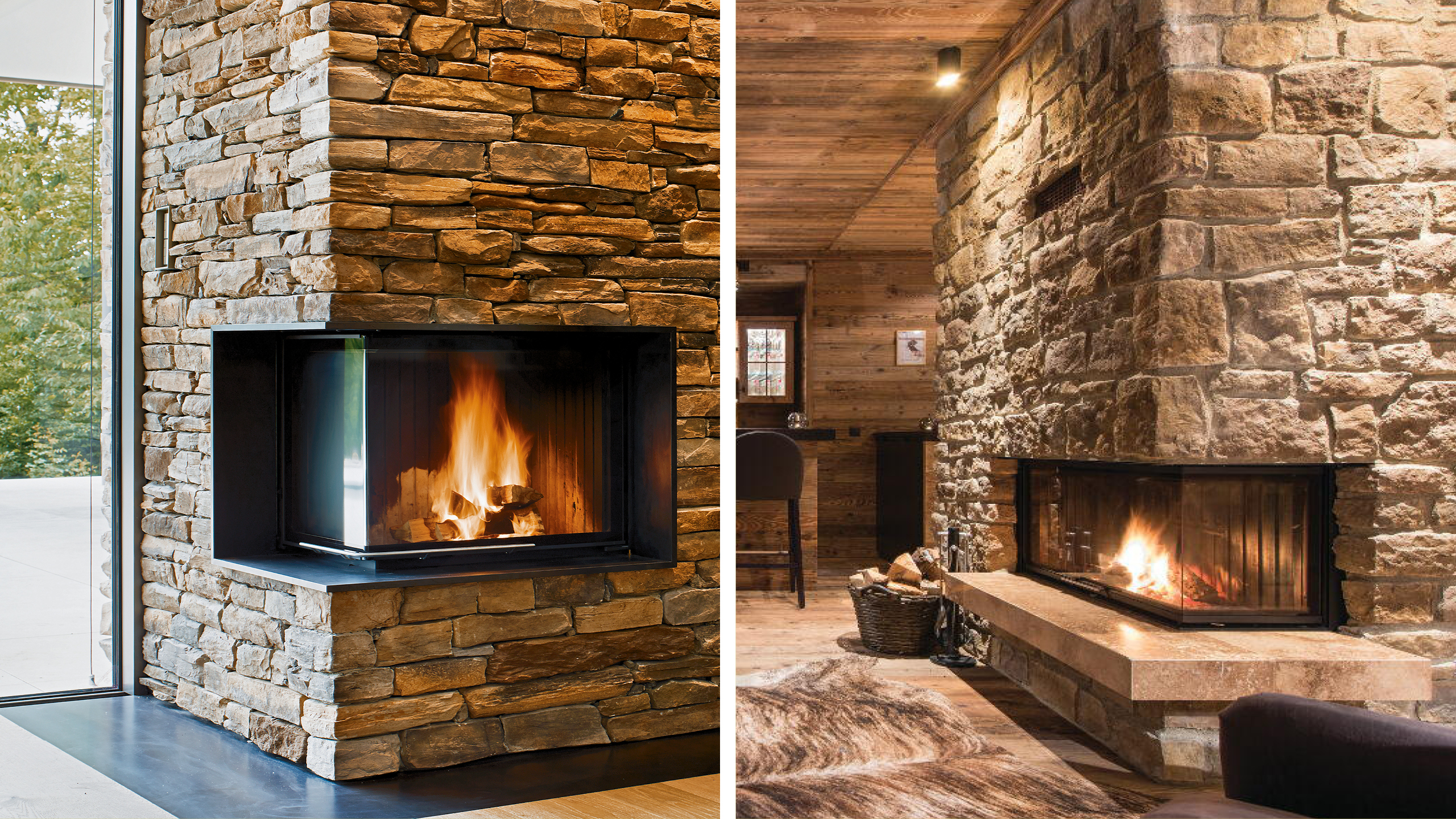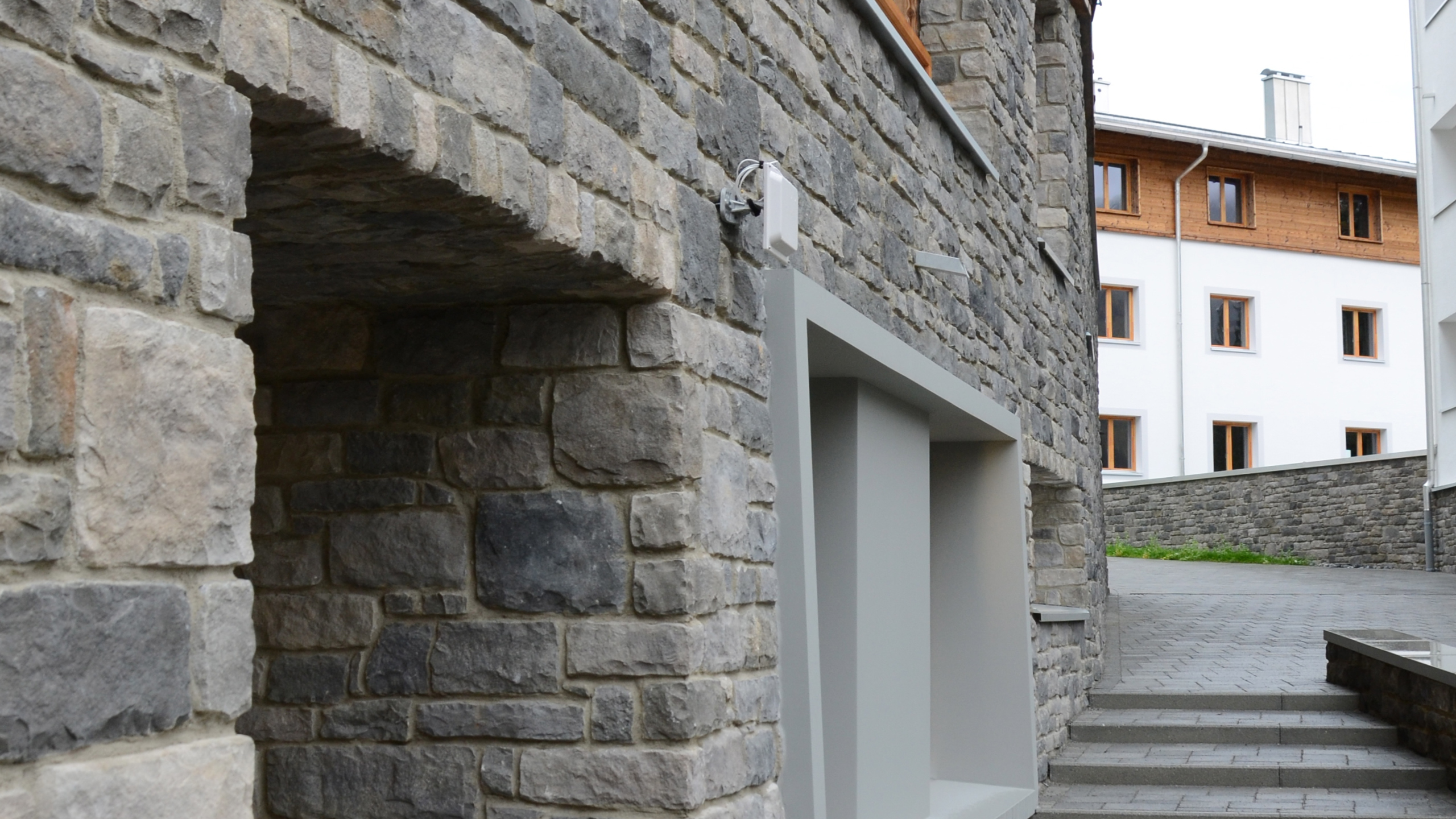ANGLE BAR
AT THE SIDE: Various examples of installation errors where the correct angle bar for that model was not used.
As illustrated, the result is not convincing or authentic, and shows that the stone is thin and compromising a good linear wall installation.



BELOW: The gallery shows installations where angle bars have been used to produce a professional result.
Structurally, a corner stone constitutes the most important element in a stone wall. The largest, most regular-shaped stones are placed in this position in loadbearing walls, as they can withstand more static stress from the wall, and support overlying ashlar stones more easily. This structural characteristic must also be replicated in façade coverings where the manufactured stone has no loadbearing purpose, in order to convey the image of an authentic, stable wall. To this effect, it is important to use the angle bars specially designed for each model.
For additional authenticity we recommend selecting some of the larger pieces and laying them from the bottom upwards, proceeding with other pieces and smaller pieces, matching them using an alternating technique.
Where a solution is chosen that does not include large stones, as in the DESIGN collection, the corner must still be continuous to make it look a complete, and therefore real, part.
Our range includes the Geocorner collection, with angle bars that combine with various models.
In architecture, corners are large due to their loadbearing function, and often have stones that differ to the other stones gathered locally.
